The Goblin is a pattern that does a good job of imitating two important food sources to fish in the Great Lakes region: the Goby and Sculpin. This large profile fly provides a great silhouette as well as action and with its inverted hook, it’s ideal when fishing either on the lake or river bottom and when fished around structure. The two-tone color perspective makes is very realistic and the barring of the rabbit helps create that illusion of food.
When fishing in Grand Traverse Bay and Lake Michigan, I find the Goblin works very well on smallmouth bass since there is a dense population of goby; carp have been known to eat it too. With it’s weighted eyes and saturated rabbit strip it sinks fairly well and is paired with a floating line and long leader. Once it sinks, strip it fast, but with very short pops with the rod tip and watch for the fish to take. Strip sets common with saltwater fishing is a great way to make sure the fish is hooked. Sculpins make up a key component of a trout’s diet. The Goblin can be fished “trophy-style” – that is, with a large sink-tip, typically from a boat and striped through the deep holes near and around structure before recasting.
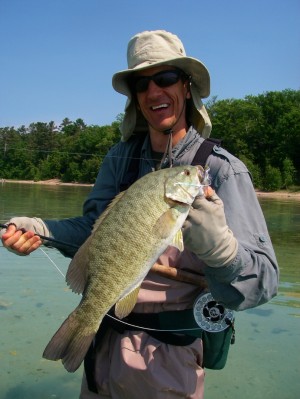
Smallmouth Bass
Another way to fish this pattern effectively is by wading with a smaller sink-tip line and fished slowly near all the structure that is likely to hold fish – primarily, the secondary structure that many of the “trophy” anglers skip. These slots, tail-outs and inside bends often provide that fish who is not hiding, but rather feeding. Rather than taking the approach of getting a territorial response from the fish, this softer approach is more like matching the natural food source and presents a pattern that wanders near a fish looking to eat. This pattern has also caught steelhead when fished with both a floating line or swung on a two-handed rod.
The fly isn’t easy to tie, but it’s not difficult either. The stacking of two colors of sculpin wool can be tricky, and if you don’t get it right the first time, cut off the wool and try again. Reminiscent of the Mad Pup, this pattern’s head is different by being trimmed short and broad to not only give the better profile, but create a more realistic swimming motion.
Goblin Recipe
Hook: Daiichi 2451 #4
Thread: Uni-6/0 Camel and Flymaster+ Tan
Tail: Black Barred Rabbit Strip Gold Variant
Collar: Rooster Saddle – Natural Brown
Fins: Hen Saddle – Speckled Brown
Head: Sculpin Wool – Cream and Sculpin Olive
Eyes: Dumbbell – Red, Extra Small or Small
Tying Instructions
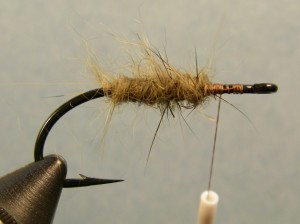 Step 1. Insert hook into vise, wrap base layer and dub a small body from some rabbit strip.
Step 1. Insert hook into vise, wrap base layer and dub a small body from some rabbit strip.
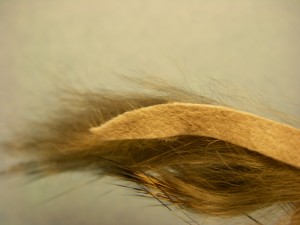 Step 2. Take a piece of rabbit strip and trim off the end to a tapered point.
Step 2. Take a piece of rabbit strip and trim off the end to a tapered point.
Step 3. Poke the rabbit strip with the hook so the end of the other end of the rabbit
strip is at the end of the dubbed under body which is the tie down point.
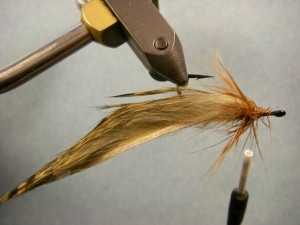 Step 4. Tie in the collar feather and wrap a few times and tie off. Trim the fibers on the
Step 4. Tie in the collar feather and wrap a few times and tie off. Trim the fibers on the
top of the fly. This feather helps support the pectoral fins that will be tied later.
Step 5. Tie a small patch of rabbit hair on top to cover up the collar.
Step 6. Tie in hen saddles to represent the pectoral fins on each side
of the body as shown. Tie one at a time and then whip finish.
Step 7. Change your thread to the heavier and stronger Fly Master+ and tie the thread in just
behind the hook eye and tie in the dumbbell eyes with figure-8 wraps.
Step 8. Position the thread between the fly body and the lead eyes. Tie in a small clump of sculpin
wool by cinching down in middle of the hair like you would stacking deer hair.
Step 9. Rotate the vise or re position the hook in the jaws and repeat the previous step with the cream wool.
Step 10. Advance the thread to between the hook eye and dumbbell
eyes and tie in the second clump of dark wool.
Step 11. Tie in the second clump of light colored wool on the underside . Tie off and whip finish.
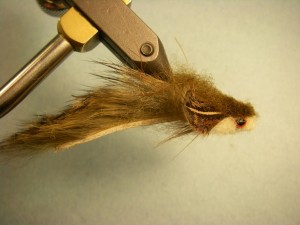 Step 12. It’s time to trim the wool. Work in a two-dimension approach by trimming
Step 12. It’s time to trim the wool. Work in a two-dimension approach by trimming
the top and the bottom of the head first. Once you get the profile you are looking
for, rotate the vise and trim from the top view to get the desired profile.

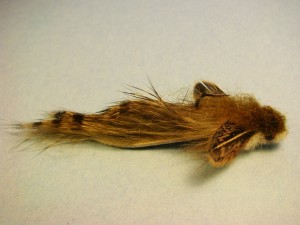
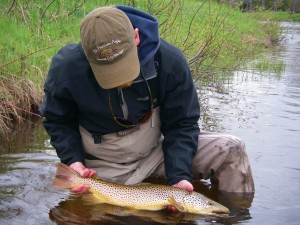
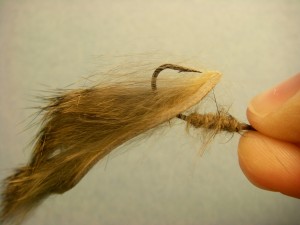
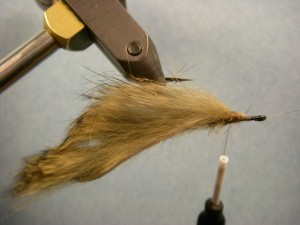
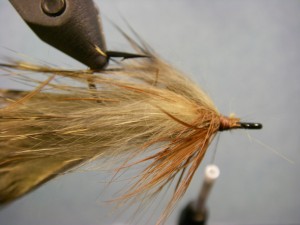
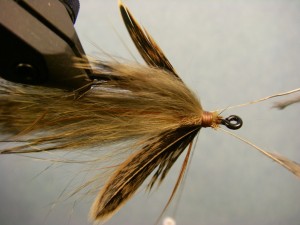
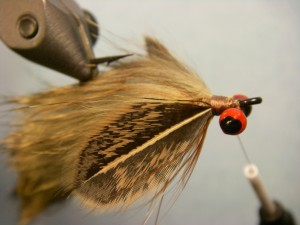
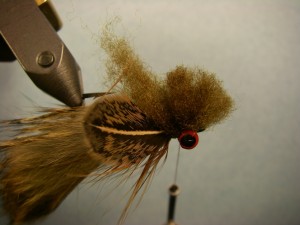
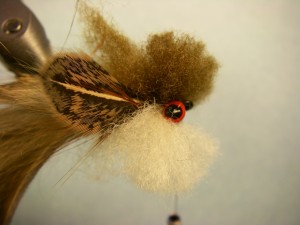

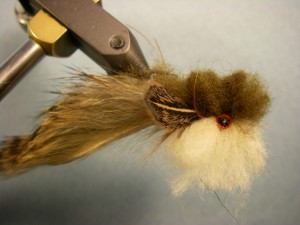
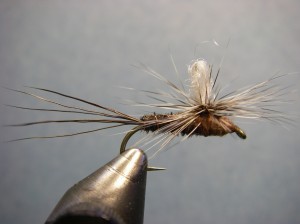
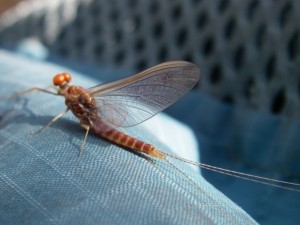
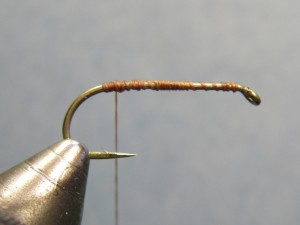

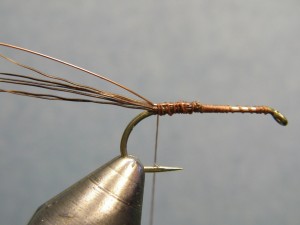
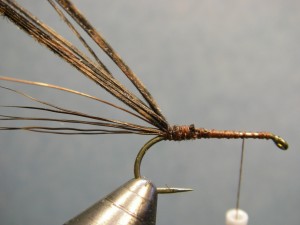

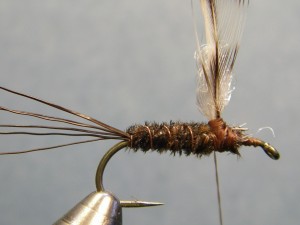
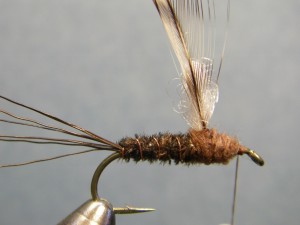
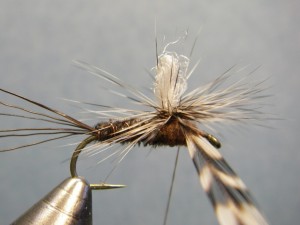
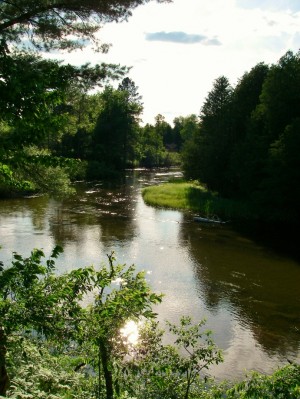
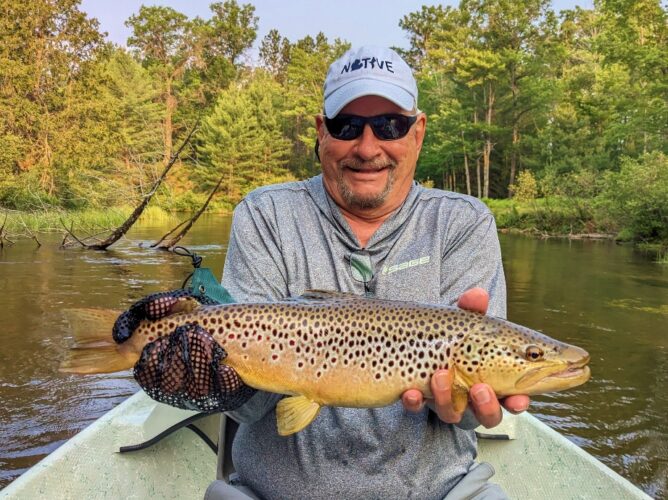
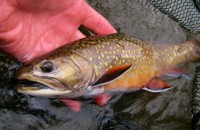
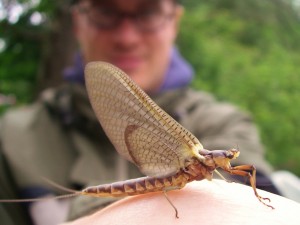
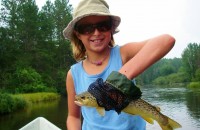 about: Brown Drakes, Isonycias, and The Hex. Into July and August the Manistee experiences Tricos, Olive Caddis, Light Cahills, and more Isonycias.
about: Brown Drakes, Isonycias, and The Hex. Into July and August the Manistee experiences Tricos, Olive Caddis, Light Cahills, and more Isonycias.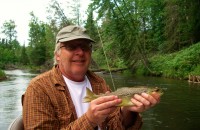
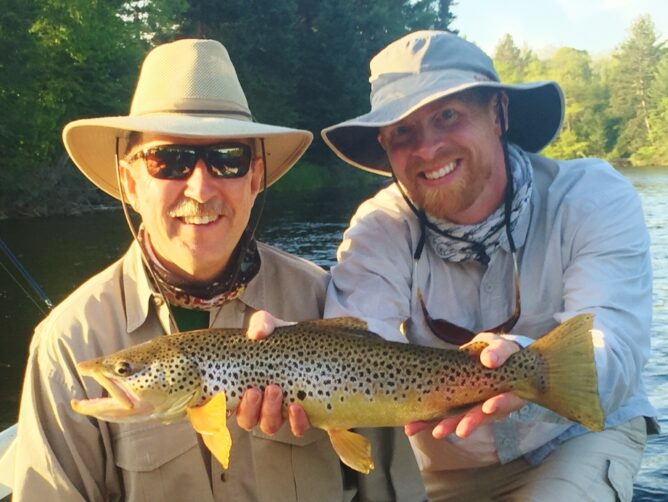
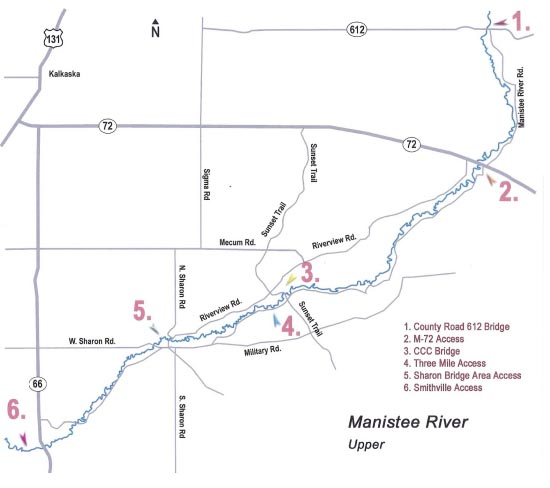
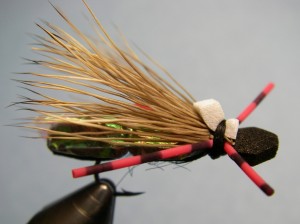
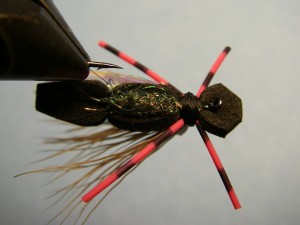
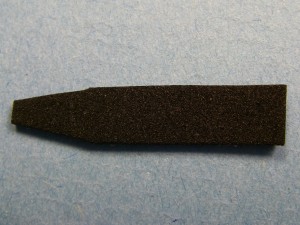
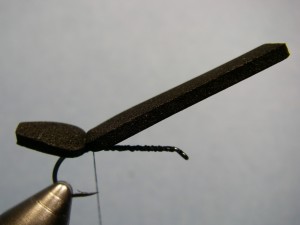
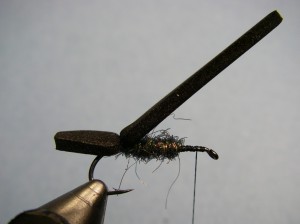
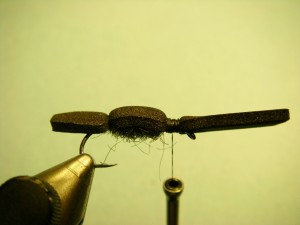
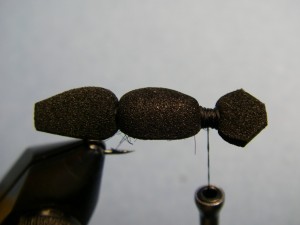
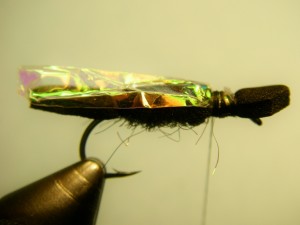

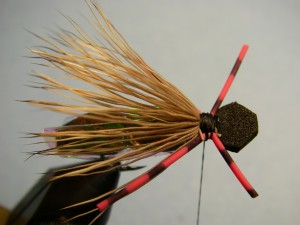
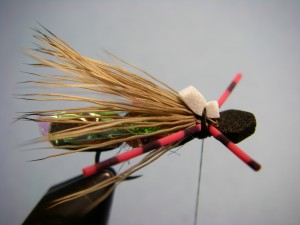
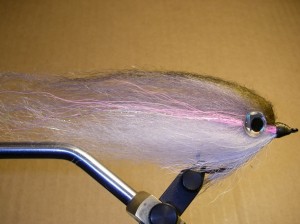
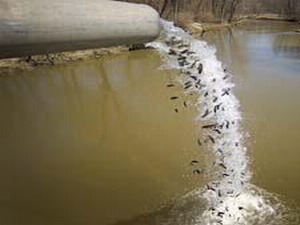
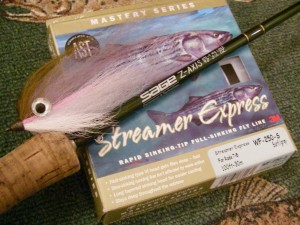
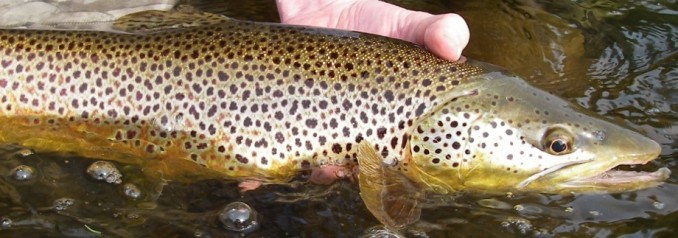
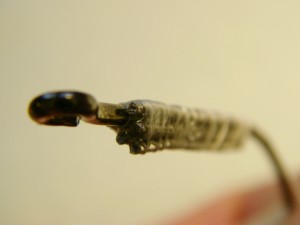
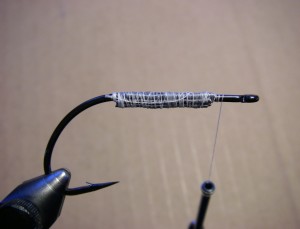
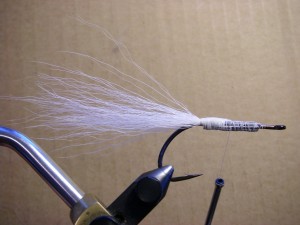 Step 2. Tie in a clump of Bucktail that will extend almost as long as the
Step 2. Tie in a clump of Bucktail that will extend almost as long as the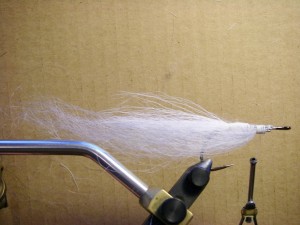 Step 3. Tie in the bottom body hair – this is Shad Gray from Wapsi. Start with
Step 3. Tie in the bottom body hair – this is Shad Gray from Wapsi. Start with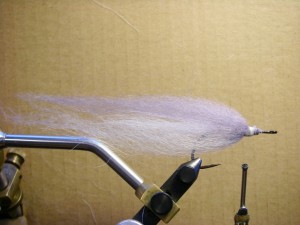 Step 4. Tie in Silver Gray (Hareline) Sheep Hair on the top
Step 4. Tie in Silver Gray (Hareline) Sheep Hair on the top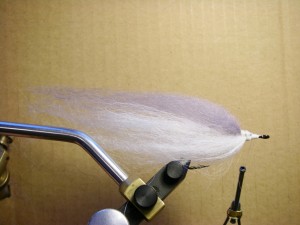 Step 5. Tie in the second section of Sheep Hair on the underside – white.
Step 5. Tie in the second section of Sheep Hair on the underside – white.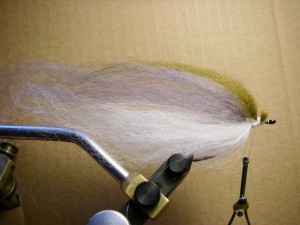 Step 6. Tie in the second Section of Sheep Hair on top of the hook – a mix of Silver Gray and Olive Brown.
Step 6. Tie in the second Section of Sheep Hair on top of the hook – a mix of Silver Gray and Olive Brown.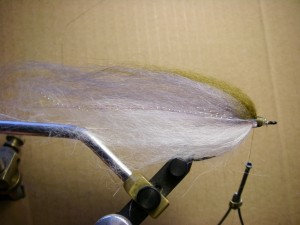 Step 7. Tie in a strand or two of Krystal Flash and some subtle flash material like Angel Hair
Step 7. Tie in a strand or two of Krystal Flash and some subtle flash material like Angel Hair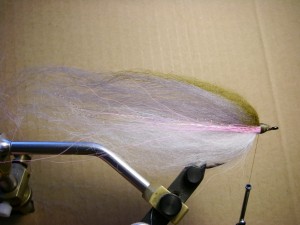 Step 8. Tie in a small section of pink deer hair on each side. Not only does this give
Step 8. Tie in a small section of pink deer hair on each side. Not only does this give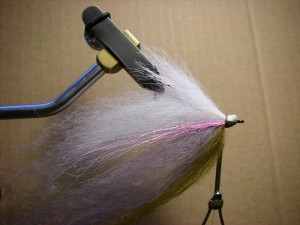 Step 9. Tie in a clump of White Calf Tail for a throat. The tips should extend downward
Step 9. Tie in a clump of White Calf Tail for a throat. The tips should extend downward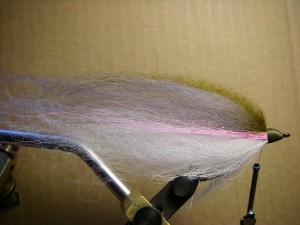 Step 10. Build a large head of thread to behind the hook eye and whip finish a few times to secure.
Step 10. Build a large head of thread to behind the hook eye and whip finish a few times to secure.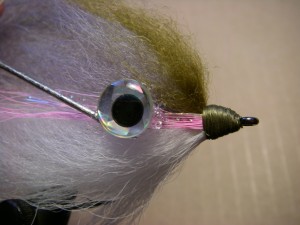 Step 11. Apply Super Fabric Textile Adhesive with a bodkin just above center on the material and
Step 11. Apply Super Fabric Textile Adhesive with a bodkin just above center on the material and Step 12. With the hook in the vise, apply a light coat of nail polish and then dry on a drying wheel. If you don’t
Step 12. With the hook in the vise, apply a light coat of nail polish and then dry on a drying wheel. If you don’t